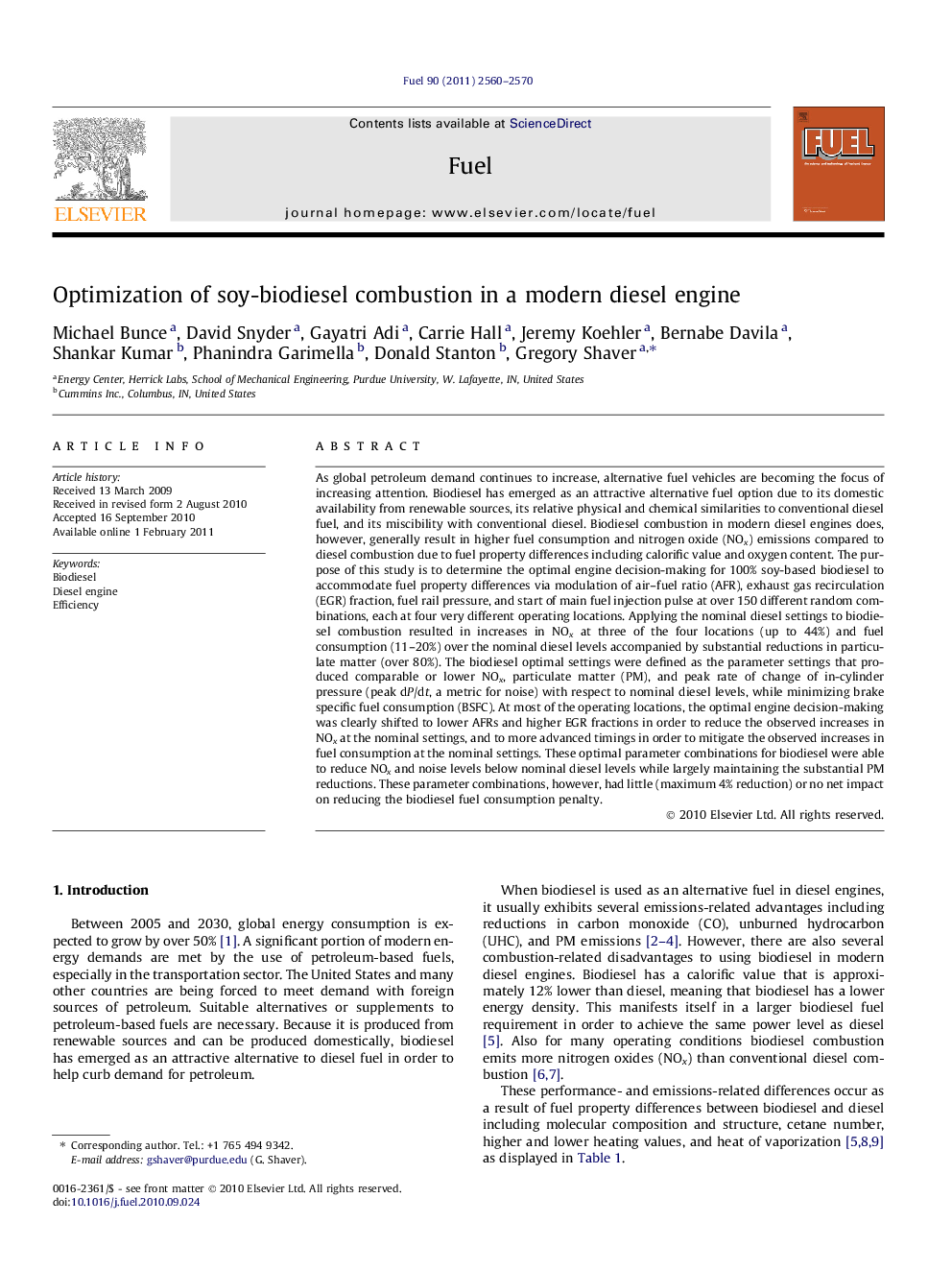| کد مقاله | کد نشریه | سال انتشار | مقاله انگلیسی | نسخه تمام متن |
|---|---|---|---|---|
| 10272736 | 461191 | 2011 | 11 صفحه PDF | دانلود رایگان |
عنوان انگلیسی مقاله ISI
Optimization of soy-biodiesel combustion in a modern diesel engine
دانلود مقاله + سفارش ترجمه
دانلود مقاله ISI انگلیسی
رایگان برای ایرانیان
موضوعات مرتبط
مهندسی و علوم پایه
مهندسی شیمی
مهندسی شیمی (عمومی)
پیش نمایش صفحه اول مقاله

چکیده انگلیسی
As global petroleum demand continues to increase, alternative fuel vehicles are becoming the focus of increasing attention. Biodiesel has emerged as an attractive alternative fuel option due to its domestic availability from renewable sources, its relative physical and chemical similarities to conventional diesel fuel, and its miscibility with conventional diesel. Biodiesel combustion in modern diesel engines does, however, generally result in higher fuel consumption and nitrogen oxide (NOx) emissions compared to diesel combustion due to fuel property differences including calorific value and oxygen content. The purpose of this study is to determine the optimal engine decision-making for 100% soy-based biodiesel to accommodate fuel property differences via modulation of air-fuel ratio (AFR), exhaust gas recirculation (EGR) fraction, fuel rail pressure, and start of main fuel injection pulse at over 150 different random combinations, each at four very different operating locations. Applying the nominal diesel settings to biodiesel combustion resulted in increases in NOx at three of the four locations (up to 44%) and fuel consumption (11-20%) over the nominal diesel levels accompanied by substantial reductions in particulate matter (over 80%). The biodiesel optimal settings were defined as the parameter settings that produced comparable or lower NOx, particulate matter (PM), and peak rate of change of in-cylinder pressure (peak dP/dt, a metric for noise) with respect to nominal diesel levels, while minimizing brake specific fuel consumption (BSFC). At most of the operating locations, the optimal engine decision-making was clearly shifted to lower AFRs and higher EGR fractions in order to reduce the observed increases in NOx at the nominal settings, and to more advanced timings in order to mitigate the observed increases in fuel consumption at the nominal settings. These optimal parameter combinations for biodiesel were able to reduce NOx and noise levels below nominal diesel levels while largely maintaining the substantial PM reductions. These parameter combinations, however, had little (maximum 4% reduction) or no net impact on reducing the biodiesel fuel consumption penalty.
ناشر
Database: Elsevier - ScienceDirect (ساینس دایرکت)
Journal: Fuel - Volume 90, Issue 8, August 2011, Pages 2560-2570
Journal: Fuel - Volume 90, Issue 8, August 2011, Pages 2560-2570
نویسندگان
Michael Bunce, David Snyder, Gayatri Adi, Carrie Hall, Jeremy Koehler, Bernabe Davila, Shankar Kumar, Phanindra Garimella, Donald Stanton, Gregory Shaver,